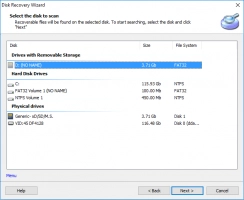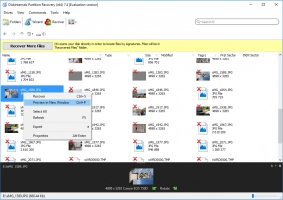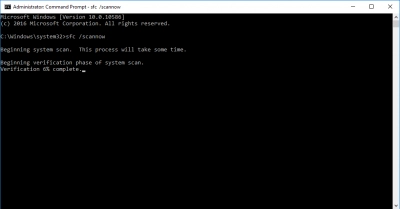SSD failure: its signs, brief solutions and how to avoid it in the future
Here you will find out:
- SSD reliability and reasons for its failure
- signs of damage and its solutions
- how DiskInternals Partition Recovery can help you
Are you ready? Let's read!
SSD reliability and what you need to know
The well-known name SSD stands for solid-state drives and has many advantages over hard drives. First of all, it is built for reliability and durable use.
Why? Because in the SSD, there are no moving parts that can break at the slightest fall.
This is their first big plus. In addition, SSDs can handle high and low temperatures, as well as their differences; they can withstand magnetic fields, vibration, etc. Also, do not forget that the SSD is much more compact than other drives. With regard to energy consumption, the SSD is also in black.
Therefore, for mobile gadgets, this will be the best option.
Reasons behind SSD failure
Do SSD drives fail? Unfortunately, it happens.
At the same time, the causes and signs of SSD failure are the same as for hard drives.
These can be system errors or failures: damage to sectors, the registry, the file system, etc. Virus attack and removal of important system files with a malicious application can also overtake you at any time and eventually lead to SSDs not booting.
And, what is sadder, repair of solid-state drives is much more complicated than hard drives. Although you always need to try to do something; you might be lucky.
5 signs of SSD failure and their solutions
So, let's understand this in order. Below are the 5 most SSD failure symptoms, as well as the best solution.
- 1. File system corruption is a serious problem.
In order to repair solid-state drives, you need to recreate the file system. Prior to this step, you need to create a backup of your files. If there are any deleted files - use DiskInternals Partition Recovery and so you will not lose them forever.
Now a few words about Partition Recovery.




It has 3 recovery modes for the user's choice: reader mode, uneraser mode (fast recovery) or recovery mode (full recovery). Also, a free trial version of the program was developed especially for thoughtful users, as well as a free preview function before you decide to save the recovered data. As for the supported file systems, there is no need to worry about it — DiskInternals Partition Recovery works with all known file systems. Scanning occurs on each of the disk partitions, so the maximum amount of data will be found. The built-in Recovery Wizard is a great bonus from developers, especially if you are not well-versed in the technical process.
Summarizing all the above, it should be said that DiskInternals Partition Recovery is a professional tool for data recovery in any critical situation that you can rely on with 100% confidence.
- 2. Bad sectors.
In this case, you can try chkdsk, but there is no guarantee that your SSD will remain in good health for a long time and not require replacement. It should be noted that the chkdsk utility is harmful to recoverable data and damages it, dividing it into smaller parts of 512 KB each and that this is irrevocable. So if you need to restore some files, use DiskInternals Partition Recovery before trying chkdsk.
If there are no files that need to be recovered - there is no danger in chkdsk use.
- 3. System failure.
To get started, just try restarting your computer for a while — if it works, backup your files and reinstall the OS. If the reboot does not help, try restoring or reinstalling Windows. Please note that due to the reinstallation, all files on the same disk where the OS was lost will disappear without a trace. You can try to restore data with Partition Recovery (using the software is better, of course, before reinstalling the system, but not necessarily — only if there are some deleted files).

Another option - you can try the built-in SFC utility to scan the disk and fix the errors found.
- 4. Read-only.
Need to try backing up files if you can. If not, use the DiskInternals Partition Recovery software. You can also try running SFC or chkdsk, but there is no guarantee that this will help.
- 5. Read /Write Operation.
Here you can also try using the built-in utilities, SFC or chkdsk. In addition, backups here also come in handy. Partition Recovery is perfect for this purpose.
3 Tips for keeping Solid State Drive's long life
If you have seen the warning signs of SSD and /or have been using it for more than 5 years (and this is an SSD's lifespan), you need to take care of the new SSD. If for any reason this is not possible at the moment, use the following tips. They will help you to hold out for some time.
- Make sure that the disk has some free space and is not heavily overloaded.
- Avoid surges and disconnect device properly.
- Make sure that the computer does not overheat — this will significantly increase the life of the disk.
These simple tips should help you avoid signs of SSD failure.


